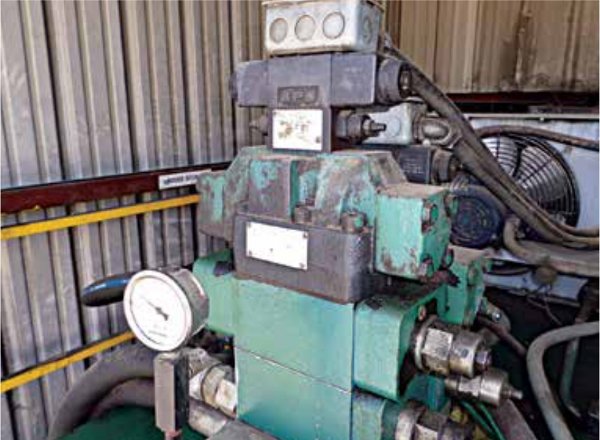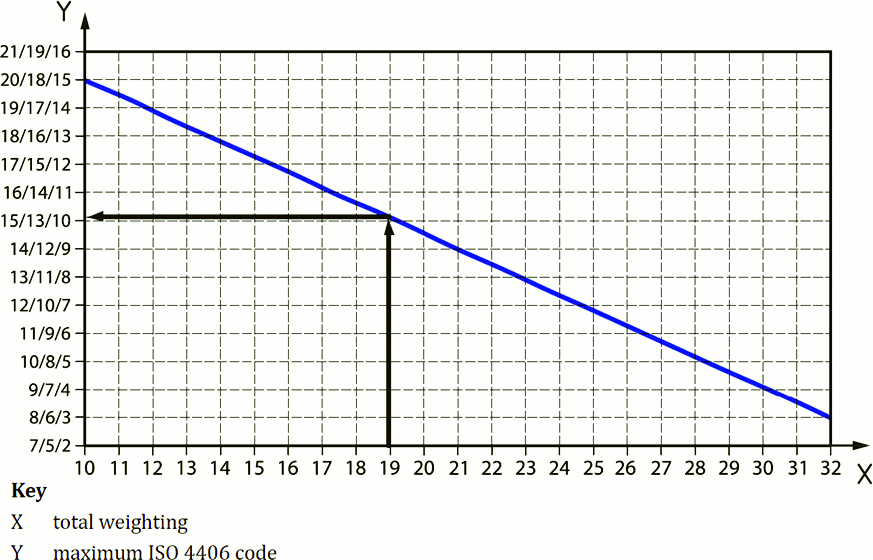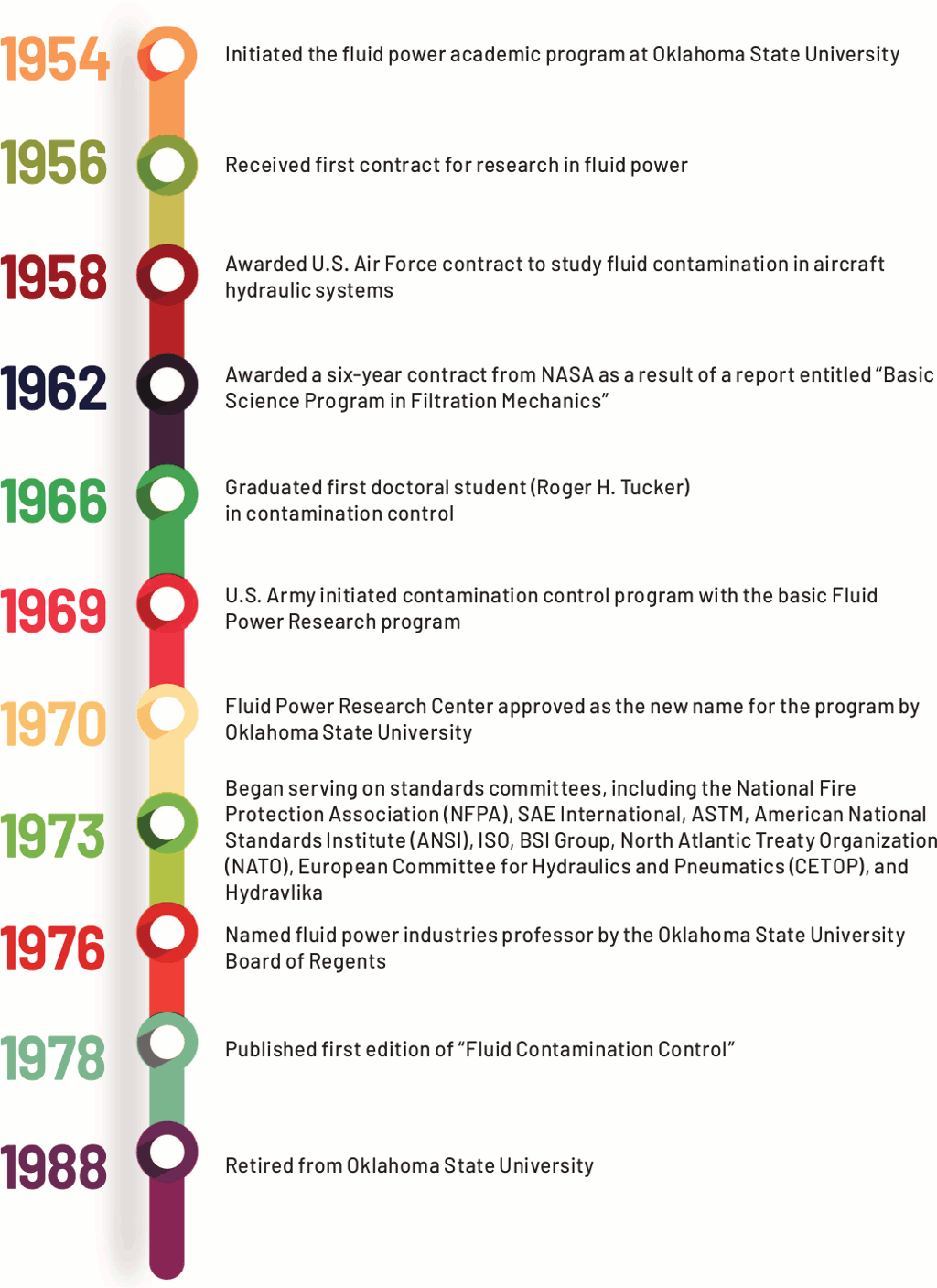Determining the Required Cleanliness Level of Hydraulic Systems
Lubrication’s biggest enemy is contamination, especially solid contaminants like dirt. Once contamination gets into the oil, it becomes a crux to lubricant failure and ultimately machine failure. A robust reliability program would not be complete without an action plan to help minimize contamination in lubricants.
While all lubricated machines are prone to the pitfalls of contamination, hydraulic systems are of particular interest, as they experience unique operating conditions and often require components that are inherently contaminant-sensitive.
 How contaminants affect the reliability of hydraulic systems has been the focus of hundreds of studies over the last few decades. For a brief history of E.C. Fitch’s crucial involvement in understanding the influence of contamination on hydraulic systems, see the sidebar below.
How contaminants affect the reliability of hydraulic systems has been the focus of hundreds of studies over the last few decades. For a brief history of E.C. Fitch’s crucial involvement in understanding the influence of contamination on hydraulic systems, see the sidebar below.
Today, hydraulic system manufacturers and end users are more aware of the contaminant sensitivities of machine components. However, while the “why” has been expressed and openly discussed, the “how” is not as widely understood. This not only would include how to reduce contaminants in the system but also by how much.
In hydraulic systems, the proactive measures of fluid contamination control - both exclusion and removal of contaminants - require an investment beyond just the equipment. Typically, an optimized approach includes a combination of both.
With exclusion being the first line of defense, it almost always is more cost effective to keep contaminants out rather than to remove them after they are in the oil. It has been estimated that it costs at least 10 times more to remove a gram of dirt than it would to exclude it in the first place.
One principle to consider is the optimum reference state (ORS), where each lubrication decision strives for optimization by considering all relevant factors, such as cost, safety, downtime, component sensitivity, etc. This principle can be applied in the context of contamination control as well. On one extreme, you could get carried away by investing excessively in filtration practices to ensure the machines are kept clean.
On the other end, you could attempt to save money by making no investment in contamination control, but the result likely would be unreliable operations and eventually unexpected, premature downtime. Choosing the right amount to invest in contamination control to optimize your return on investment should be the goal.
How Clean?
How clean should your systems be? You must decide what your motives are. What is the system’s failure history? Is the consequence of downtime too great? This is a strategic maintenance decision. In theory, you are attempting to minimize the net effect between the investment and the correlated savings from improved reliability.
In other words, the cost that goes into the oil’s cleanliness should be at such an amount that any more or less investment would increase the overall net effect. In reality, this exact amount is impossible to pinpoint, but with some considerations of the known factors, you can determine a required cleanliness level with some confidence of the benefits.
In some instances, the benefits of cleaner oil may not outweigh the means, but for the vast majority, the failure of these machines incurs too much risk to not invest in some level of contamination control. In this case, the required level of oil cleanliness can be calculated.
The industry’s culmination of this cleanliness question has given rise to many methods over the years, one of which is outlined in the ISO 12669 standard. Following is a more detailed discussion of this method along with options for how to best implement it.
Required Cleanliness Level
As mentioned previously, it’s not realistic to assume that someone can “clean up the oil” to the point where all contaminants are removed. Every step cleaner requires a greater maintenance cost, either with better equipment or more time and labor. So, before you start working in one direction, you must establish a target to optimize the costs. This target is the required cleanliness level (RCL).
The RCL is derived from a calculation involving several factors, including the machine’s components, operating conditions and environmental influences, among others. Figure 1 shows the resulting plot between the calculated sum of contributing factors and the RCL represented using the ISO 4406 cleanliness code.
For those unfamiliar with the cleanliness code, the three range numbers, such as 15/13/10, correspond to the number of contaminants greater than 4, 6 and 14 microns, respectively.
The calculated sum of contributing factors is known as the total weight. These factors, six in total, each have their own weighting table and are summarized below.
Working Pressure and Duty Cycle – This scale, from 1 to 8, is not only defined by the range of working pressure but also by the level of inconsistency the system pressure experiences during operation. The more consistent and lower the pressure, the lower the number. The greater the variations and pressure, the larger the number.
Component Contaminant Sensitivity – This scale, from 1 to 8, looks at the types of components to which the hydraulic fluid is exposed. The most sensitive components, such as valves and pumps, should be the primary consideration. For example, a high-performance servo-valve will warrant a higher weight factor because of the potential for contaminants to jam the spool against the valve block due to the clearance and pressure differentials.
System Life Expectancy – This scale, from 1 to 5, requires an expected life-cycle time (in hours) of the hydraulic system. The longer the system is expected to remain in service, the greater the control of contamination should be. If significant contamination is perpetually permitted to remain in the system over an extended period of time, the degree of damage it may cause is greater.
Total Cost of Component Replacement – This scale, from 1 to 4, takes into consideration the types of components in the system, primarily by the amount of labor and cost it would take to replace them. Larger components and more complex systems usually warrant a higher weight factor.
Cost of Downtime – This scale, from 1 to 4, depends on the equipment’s overall impact on production. It might be the most intuitive consideration. If production is not impacted by the component, then the weight factor remains low. The more disruption to production and overall downtime costs caused by a system failure, the higher the weight factor.
Risk – This scale, from 1 to 6, is similar in consideration to the cost of downtime, but instead of a production risk, it is a safety risk. This is associated to potential hazards that might be created for individuals in the surrounding area as a result of a system failure. (Although the ISO 12669 standard does not explicitly list environmental impact as a factor, I would suggest this risk factor to consider the environment as well.)
After the weights for the six categories have been determined, all the contributing factors can be totaled to a single number. This number can then be correlated to an ISO contamination code as a target for the hydraulic system’s RCL. In general, this approach should be appropriate for most applications.
However, it is still a guideline, not a hard and fast rule, especially when the RCL is at the ends of the scale where ISO contamination codes are high (above 20) or low (below 10).
If the calculated RCL suggests 20/18/15 as the target for the system, the incoming oil might be cleaner than this level, in which case doing nothing to clean the oil may be acceptable. If the oil is considerably cleaner than the target, it might be worthwhile to keep the oil at this level rather than permitting it to become more contaminated.
After all, the cost to keep contaminants out of the oil may only be about 10 percent in comparison to what it takes to filter them out.
On the other hand, if the calculated RCL is extremely low, such as 10/8/5 or less, it will require more than just filtration to accomplish the goal. This may not be realistic given your machine’s environment. As stated earlier, the net effect across both the investment in cleaner oil and the return in benefits must be minimized.
Understanding ISO 12669
ISO 12669 is designed for hydraulic systems, although the essential strategy can be adapted for application in other lubricated systems. This standard reviews the need for setting targets on solid particulate contamination levels only.
Therefore, it does not include a cleanliness target level consideration for soft insolubles, water or any other contaminants. The standard is also intended to provide considerations of fluid cleanliness for the initial flushing requirements, manufacturing process, assembly, commissioning and operating filtration requirements.
When component considerations are relevant in calculating the RCL, the component manufacturer can offer recommendations as to the equipment’s sensitivities and the suggested RCL weight factors. Likewise, filter manufacturers can give recommendations on the RCL weight factors when they have developed evidence correlating the filtration methods and hydraulic system applications.

The contaminant sensitivity tests for components originated from studies conducted at the Fluid Power Research Center of Oklahoma State University in the 1970s. These studies, along with a U.K. Department of Trade and Industry (DTI) survey, helped emphasize the importance of hydraulic fluid filtration as a more effective strategy for component life extension.
In the late 1990s, the British Fluid Power Association’s technical committee on contamination control was instrumental in developing early methods for determining the RCL. This provided influence on the conclusive weight factors applied in the current ISO 12669 standard.
Proactive Maintenance in Three Easy Steps
Cleaner oil extends the life of your machines by keeping the frictional zones less exposed to the dangerous effects of contaminants. When the effort to achieve this is carefully optimized, the return on investment can be a significant advantage, even a competitive advantage. Creating this RCL target is only the first step of a complete proactive maintenance contamination control strategy. Following are the three steps:
-
Set the cleanliness target. This can be determined through experience and optimized with a methodology such as what is outlined by ISO 12669 along with the optimum reference state. The target should ultimately reflect your reliability objectives.
-
Take specific actions to achieve these targets through a two-pronged approach, reducing ingression and improving filtration. Reducing ingression is more cost-effective but not a perfect standalone solution. Combining this with improved filtration is necessary for any critical application.
-
Measure contaminant levels frequently with oil analysis. As the saying goes, what gets measured gets done. Knowing the contamination history is vital to a sustainable program. Contamination levels are a leading indicator, while the wear and failure rates are a lagging indicator. Proactive measures can be justified and reinforced with more data to validate the cause and effect. It’s recommended that these types of results be posted openly for everyone involved to understand.
References
ISO 12669:2017: Hydraulic fluid power — Method for determining the required cleanliness level (RCL) of a system
Fitch, Jim. (2006). “A Conversation with Dad — Pioneer, Educator and Mentor in Fluid Contamination Control.” Machinery Lubrication
Fitch, E.C. (1988). Fluid Contamination Control, Fourth Edition. FES Inc.
 Fluid Power Pioneer
Fluid Power Pioneer
Dr. Ernest C. Fitch (1924-2011), also known as “Bucko,” first began his involvement in fluid power in the early 1950s when he started the fluid power academic program at Oklahoma State University. This topic become the focus of his career. In 1956 and into the 1960s, he was awarded major contracts in fluid power research by NASA and the U.S. Air Force to study the effects of contaminants and investigate contamination control test methods for hydraulic systems. During the decades that followed, his contributions became a cornerstone in an industry that was quickly revolutionized by the benefits of contamination control. He continued his industry-leading research for more than 30 years, served on many standards committees, and authored several books and more than 200 technical papers. His Fluid Power Research Center provided the research for many ISO standards used today in this industry, including those for particle counters, filter beta ratings and fluid sampling procedures, to name just a few. An extended account of his life can be found at MachineryLubrication.com.
